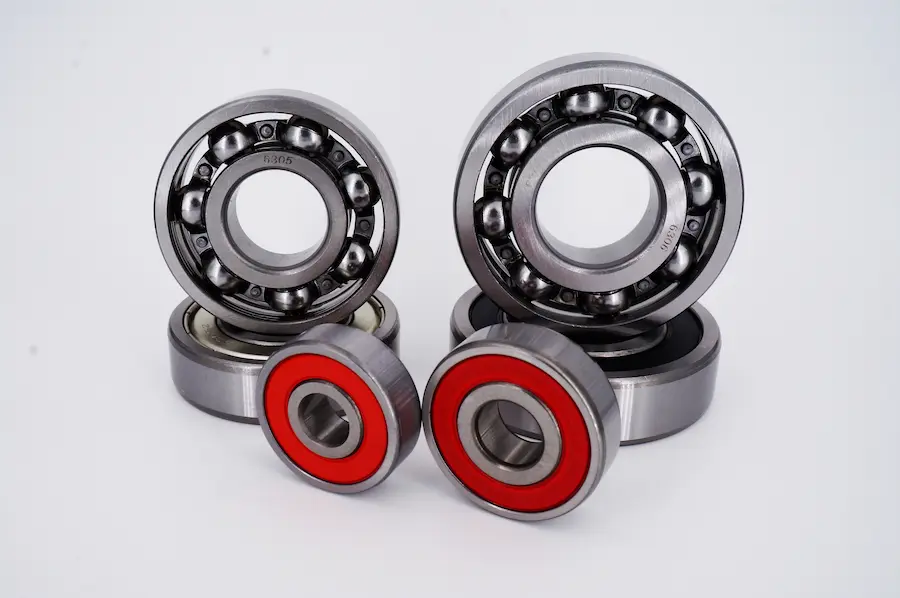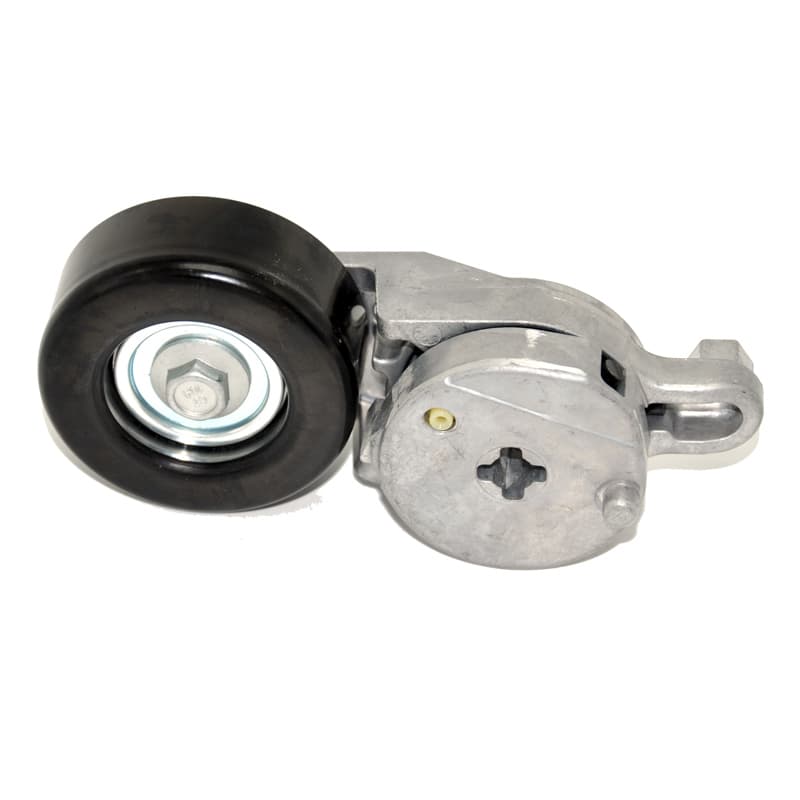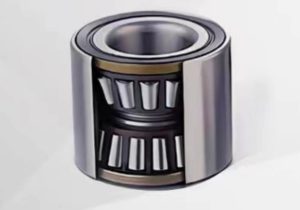Introduction
Wheel hub bearings DU are critical components in any vehicle’s suspension system. They facilitate the smooth rotation of the wheels, bear the weight of the vehicle, and endure the various forces encountered during driving, such as acceleration, braking, and cornering. The specific type known as Wheel Hub Bearings DU is designed to offer high durability and performance under demanding conditions. However, like all mechanical parts, these bearings require proper maintenance to maximize their lifespan and ensure the safety and efficiency of your vehicle.
This article provides a comprehensive guide on how to maximize the lifespan of your Wheel Hub Bearings DU. By understanding their function, identifying potential issues early, and following best maintenance practices, you can extend the service life of your bearings, avoid costly repairs, and maintain optimal vehicle performance.
Understanding Wheel Hub Bearings DU
Wheel Hub Bearings DU are typically designed as sealed units, combining both the bearing and hub assembly into a single component. These bearings are responsible for several key functions:
- Supporting the Vehicle’s Weight: Wheel hub bearings bear the entire weight of the vehicle, along with passengers and cargo. They are engineered to handle the vertical and lateral forces generated while driving.
- Enabling Smooth Wheel Rotation: By reducing friction, these bearings allow the wheels to rotate smoothly and efficiently. This is crucial for maintaining control and ensuring a comfortable ride.
- Maintaining Alignment and Stability: Properly functioning wheel hub bearings help maintain wheel alignment and vehicle stability, contributing to safe and predictable handling.
- Protecting Against Contaminants: The sealed design of Wheel Hub Bearings DU prevents dirt, water, and other contaminants from entering the bearing assembly, which helps prolong its life.
Given the critical role these bearings play, it’s essential to ensure they are properly maintained to prevent premature failure and extend their lifespan.
Common Causes of Wheel Hub Bearing DU Failure
Understanding the common causes of wheel hub bearing failure can help in taking preventative measures. Here are some of the most prevalent issues:
- Contamination: Despite their sealed design, wheel hub bearings can still be compromised by contaminants such as dirt, water, and road salt. These elements can penetrate the seal over time, leading to corrosion and bearing wear.
- Overloading: Exceeding the vehicle’s weight capacity can place excessive stress on the wheel hub bearings, leading to accelerated wear and potential failure. This is particularly common in vehicles frequently used for towing or carrying heavy loads.
- Improper Installation: Incorrect installation of wheel hub bearings can result in misalignment, uneven load distribution, and increased friction, all of which can shorten the bearing’s lifespan.
- Impact Damage: Hitting potholes, curbs, or other road hazards can cause damage to the wheel hub bearings. Even a small impact can lead to dents or cracks in the bearing, compromising its integrity.
- Poor Lubrication: While Wheel Hub Bearings DU is designed to be maintenance-free, older or non-sealed bearings can suffer from inadequate lubrication, leading to increased friction, heat, and wear.
- Driving Conditions: Frequent driving on rough roads, exposure to harsh weather conditions, and aggressive driving habits can all contribute to the premature wear of wheel hub bearings.
Best Practices for Maximizing the Lifespan of Wheel Hub Bearings DU
To ensure your Wheel Hub Bearings DU last as long as possible, follow these best practices:
1. Regular Inspection and Maintenance
Routine inspections are key to detecting potential issues before they lead to bearing failure. During regular vehicle maintenance, have a professional mechanic check the condition of your wheel hub bearings. This includes:
- Listening for Unusual Noises: A humming, grinding, or growling noise coming from the wheels is often a sign of bearing wear or damage. Early detection can prevent more severe problems down the line.
- Checking for Wheel Play: During an inspection, the mechanic will check for excessive play or movement in the wheels. This can indicate that the bearings are worn and need to be replaced.
- Visual Inspection: A visual inspection can reveal signs of rust, corrosion, or other damage to the bearing assembly. While the sealed design of Wheel Hub Bearings DU reduces the likelihood of such issues, it’s still important to check.
2. Avoid Overloading Your Vehicle
Respect the manufacturer’s recommended load capacity for your vehicle. Overloading puts extra strain on the wheel hub bearings, leading to faster wear and potential failure. If you frequently carry heavy loads or tow trailers, consider investing in bearings designed for higher load capacities.
3. Drive Carefully
Your driving habits have a significant impact on the lifespan of your wheel hub bearings. To minimize wear:
- Avoid Hitting Potholes: Try to steer clear of potholes and road hazards whenever possible. If you can’t avoid them, slow down to reduce the impact on your bearings.
- Take Corners Gently: Aggressive cornering places additional lateral forces on the wheel hub bearings, accelerating their wear. Slow down when taking turns to reduce stress on the bearings.
- Brake Smoothly: Abrupt braking increases the load on your wheel hub bearings. Maintain a safe following distance to avoid the need for sudden stops.
4. Ensure Proper Installation
If you need to replace your wheel hub bearings, ensure they are installed correctly by a qualified professional. Proper installation involves:
- Using the Right Tools: Specialized tools are often required to install wheel hub bearings without damaging them. A professional mechanic will have the necessary equipment to do the job correctly.
- Following Torque Specifications: Wheel hub bearings must be installed with the correct torque. Too much or too little torque can lead to misalignment, excessive friction, and premature wear.
- Aligning the Bearings Properly: Correct alignment is essential to ensure even load distribution and smooth operation. Misalignment can cause uneven wear and reduce the bearing’s lifespan.
5. Use High-Quality Bearings
When it’s time to replace your wheel hub bearings DU, always opt for high-quality components that meet or exceed the manufacturer’s specifications. While cheaper bearings may save money upfront, they often lack the durability and precision of higher-quality options, leading to more frequent replacements and higher overall costs.
6. Protect Against Contamination
While Wheel Hub Bearings DU are designed to be sealed and maintenance-free, you can take additional steps to protect them from contamination:
- Wash Your Vehicle Regularly: Regular washing helps remove dirt, road salt, and other contaminants that can damage the wheel hub bearings.
- Avoid Driving Through Deep Water: Driving through deep water can cause water to seep into the bearing assembly, leading to corrosion and wear. If you must drive through water, do so slowly and have the bearings inspected afterward.
7. Monitor for Early Warning Signs
Pay attention to any changes in your vehicle’s handling, noise, or performance. Early warning signs of wheel hub bearing issues include:
- Vibrations in the Steering Wheel: If you feel vibrations in the steering wheel, it could be a sign of worn or damaged wheel hub bearings.
- Pulling to One Side: A vehicle that pulls to one side may have a failing wheel hub bearing. This can also be caused by other issues, so it’s important to have it checked by a professional.
- Uneven Tire Wear: Uneven tire wear can be a sign of misalignment caused by a faulty wheel hub bearing. Regularly inspect your tires for signs of uneven wear and address the underlying cause promptly.
Conclusion
Maximizing the lifespan of your Wheel Hub Bearings DU requires a combination of regular maintenance, careful driving, and prompt attention to potential issues. By following the best practices outlined in this guide, you can extend the life of your bearings, reduce the risk of unexpected failures, and maintain the safety and performance of your vehicle.
Investing in high-quality bearings, ensuring proper installation, and protecting against contamination are key steps in achieving long-lasting durability. Remember, while Wheel Hub Bearings DU are designed to withstand tough conditions, their lifespan ultimately depends on how well they are maintained and cared for. With the right approach, you can keep your vehicle running smoothly and avoid the costly repairs associated with bearing failure.




